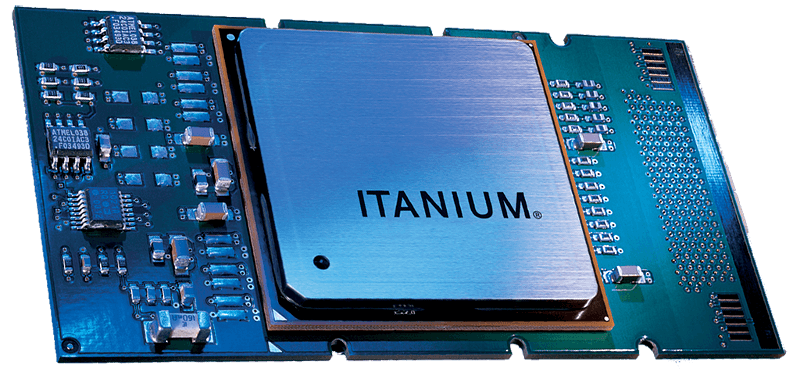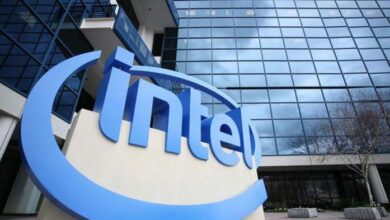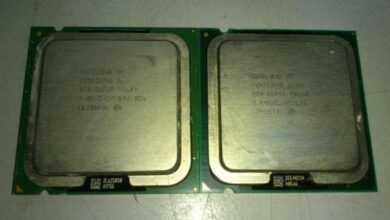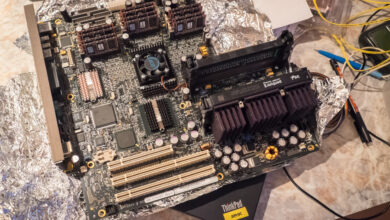Intel Updates Itanium 2 Processors A Deep Dive
Intel updates Itanium 2 processors, reigniting interest in a processor architecture that once dominated specific high-performance computing niches. This in-depth look delves into the historical context, architecture, performance, software support, and eventual fate of Itanium 2, offering a fascinating study in processor design and market trends.
We’ll explore the key architectural advancements, comparing them to contemporary processors of the era. Performance benchmarks and power consumption will be analyzed, highlighting the strengths and limitations of Itanium 2. The story also touches on the availability of software support, a critical factor in any processor’s success. Finally, we’ll examine the factors that led to Itanium 2’s eventual decline, offering insights into the processor design landscape.
Historical Context of Itanium 2 Processors
The Itanium 2 processors marked a significant, albeit ultimately challenging, chapter in Intel’s history. Designed to tackle the complex demands of high-performance computing, these processors represented a bold departure from Intel’s traditional x86 architecture. This departure, while ambitious, also presented unique challenges in terms of market penetration and user adoption.Intel’s Itanium 2 processors were positioned as a solution for demanding applications requiring substantial processing power, such as large-scale enterprise servers and high-end workstations.
However, the architecture’s complexities and the initial performance gaps compared to existing architectures created difficulties in competing effectively.
Architectural Advancements and Innovations
The Itanium 2 processors introduced a novel architecture, departing from the x86 instruction set. This architecture, known as IA-64, focused on executing multiple instructions concurrently. This approach, aimed at boosting performance in demanding tasks, was a significant departure from the x86’s sequential execution model. Key architectural advancements included:
- Explicitly Parallel Instruction Computing (EPIC): This innovative approach enabled the processor to execute multiple instructions simultaneously, a significant leap in the quest for enhanced performance.
- 64-bit architecture: Supporting a wider address space, this aspect was crucial for accommodating the memory demands of demanding applications.
- Advanced register file: The enhanced register file supported a wider range of data types and operations, further optimizing performance.
Market Positioning and Target Applications
The Itanium 2 processors were primarily aimed at enterprise server applications. These applications, often requiring complex calculations and massive datasets, were considered ideal candidates for the Itanium 2 architecture’s capabilities.
- Enterprise Servers: Large-scale servers demanding high performance for database management, financial modeling, and scientific simulations were the target applications.
- High-End Workstations: The processors also targeted workstations needing significant computing power for tasks such as computer-aided design (CAD) and scientific research.
Major Competitors and Their Offerings
The market for high-performance computing during the Itanium 2 era included strong competition.
- IBM: IBM offered their PowerPC processors, which were a significant competitor, particularly in the high-end server segment. Their focus on a different architecture and existing ecosystem provided a compelling alternative.
- Sun Microsystems: Sun Microsystems offered their UltraSPARC processors, also targeting the enterprise server market. Their strategy involved leveraging their existing platform and supporting ecosystem, offering a viable choice for users.
Initial Reception and User Feedback, Intel updates itanium 2 processors
Early user feedback on Itanium 2 processors was mixed. The architecture’s novelty and initial performance issues contributed to the complexity of adoption. However, users recognized the potential of the architecture, particularly for demanding applications.
- Performance Gaps: Early implementations of Itanium 2 processors faced performance limitations when compared to existing x86-based solutions, a factor that hampered initial adoption.
- Software Support: The availability of software optimized for the Itanium 2 architecture was a critical aspect. The lack of broad software support in the early days was a major hurdle.
- Learning Curve: The architectural shift from x86 required a significant learning curve for developers and system administrators.
Itanium 2 Processor Architecture
The Itanium 2 processor, a groundbreaking attempt at a radically different approach to processor design, introduced a novel instruction set architecture (ISA) and a complex design philosophy. While not commercially successful in the mainstream market, its architecture offered intriguing insights into the potential of explicitly parallel computing and a departure from the familiar x86 architecture. Its impact, though limited in mainstream adoption, left a lasting mark on the field of computer architecture.The Itanium 2’s innovative approach to parallel processing stood in stark contrast to the established x86 designs.
Intel’s recent updates to Itanium 2 processors are interesting, especially considering Microsoft’s recent vision for reducing IT complexity. This new approach, as outlined in their recent report microsoft outlines vision for reducing it complexity , might significantly impact how these processors are used and maintained in the future. Ultimately, these Intel updates seem poised to play a crucial role in adapting to the changing IT landscape.
This architecture aimed to tackle the challenges of complex applications by leveraging a fundamentally different approach to instruction execution.
IA-64 Instruction Set Architecture (ISA)
The Itanium 2 employed the IA-64 instruction set architecture, a 64-bit architecture designed to exploit explicit parallelism. This architecture, unlike the x86 architecture, utilized a highly regular and structured approach to instruction encoding. This approach aimed to enable more sophisticated compiler optimizations for performance gains. The IA-64 ISA supported a variety of data types, including integers, floating-point numbers, and complex data structures.
Unique Features and Benefits of IA-64
The IA-64 architecture presented several unique features that aimed to enhance performance and address the limitations of traditional architectures. A key benefit was the ability to perform multiple instructions simultaneously through explicit parallel processing. This was facilitated by the EPIC (Explicitly Parallel Instruction Computing) design. The architecture also featured a complex memory management system with various cache levels to optimize data access speed.
Intel’s recent updates to Itanium 2 processors are interesting, but the potential impact on the future of authentication systems like Microsoft Passport and the future of authentication is even more intriguing. Microsoft Passport and the future of authentication might see some interesting developments, particularly if these new Itanium 2 processor features translate into more secure and efficient authentication methods.
Ultimately, the updates to the Itanium 2 processors should have a positive impact on the overall tech landscape, especially for those companies that utilize them.
Comparison with Contemporary Architectures
Compared to prevalent architectures of the time, such as x86-64 and ARMv8-A, the Itanium 2 presented a unique proposition. The x86-64 architecture, built upon a legacy of compatibility, offered broad software support. ARMv8-A, focused on mobile and embedded systems, emphasized power efficiency. The Itanium 2, on the other hand, aimed for high performance in demanding tasks through its unique approach to parallel processing.
However, its lack of compatibility with existing software libraries and applications became a significant obstacle.
Impact of EPIC Design on Performance
The EPIC design, a crucial component of the Itanium 2 architecture, aimed to enable efficient parallel execution of instructions. This was achieved through the use of compiler directives and instructions that explicitly defined the order of execution.
“EPIC compilers could generate highly optimized code that took advantage of parallel processing opportunities, theoretically leading to significant performance gains.”
This approach aimed to optimize for performance in complex applications, but the complexity of the design also added significant overhead.
Memory Hierarchy and Cache Mechanisms
The Itanium 2 processor employed a multi-level memory hierarchy, including multiple levels of caches, to optimize data access speed. The cache structure, along with the memory management unit, was meticulously designed to minimize latency. The use of different cache levels and various cache configurations was crucial for managing the diverse needs of different data access patterns.
Comparison Table
| Feature | Itanium 2 | Contemporary Processor 1 (x86-64) | Contemporary Processor 2 (ARMv8-A) |
|---|---|---|---|
| Instruction Set Architecture | IA-64 | x86-64 | ARMv8-A |
| Processor Type | Complex, explicitly parallel | Complex, CISC | Complex, RISC |
| Focus | High performance in demanding tasks | Broad software compatibility | Power efficiency and cost-effectiveness |
Performance and Efficiency of Itanium 2
The Itanium 2 processors, while groundbreaking in their architecture, faced challenges in achieving widespread adoption. One key aspect of this struggle revolved around their performance and power efficiency relative to contemporary processors using simpler architectures. This section delves into the performance characteristics of Itanium 2, analyzing its strengths and weaknesses in various benchmarks, power consumption, and efficiency compared to other processors of the time.The Itanium 2, with its complex instruction set architecture (ISA), aimed for high performance in specific applications.
However, its performance was not uniformly strong across all tasks. Understanding its efficiency in different workloads is crucial to evaluating its overall impact. Its power consumption was also a concern, affecting its suitability for portable or mobile applications.
Performance Characteristics in Benchmarks
The Itanium 2 processors, despite their innovative architecture, often underperformed in standard benchmarks compared to x86 processors of the era. This disparity wasn’t always consistent; some benchmarks saw the Itanium 2 processors excelling, especially in tasks requiring complex computations or parallel processing. The benchmarks reflected a performance profile that was highly dependent on the specific workload.
Power Consumption
The Itanium 2 processors, with their advanced features and complex instruction sets, typically had higher power consumption than competing processors. This higher power draw translated into a greater need for cooling solutions and higher energy bills. The precise power consumption varied significantly between different Itanium 2 models, highlighting the influence of design choices.
Comparison to Other Processors
Compared to contemporary x86 processors, the Itanium 2 processors showed varying performance results. While strong in specific computationally intensive tasks, their performance in general-purpose applications lagged behind. The x86 processors, with their simpler architecture and widespread software support, held a clear advantage in everyday use. This contrast underscores the importance of software compatibility and application optimization.
Factors Influencing Performance in Specific Applications
The Itanium 2’s performance in specific applications was highly dependent on the application’s code being optimized for its unique architecture. Applications that leveraged the Itanium 2’s features, such as its vector instructions or memory access mechanisms, often showed impressive performance. Conversely, applications written for other architectures required significant modification or recompilation for optimal Itanium 2 performance. The compatibility and optimization of the application software played a crucial role.
Performance Gains and Limitations in Different Workload Types
The Itanium 2 processors exhibited significant performance gains in computationally intensive workloads, like scientific simulations and large-scale data processing. This was due to the architecture’s ability to execute multiple instructions simultaneously. However, in more general tasks, like word processing or web browsing, the performance gains were less substantial and sometimes even inferior to those of x86 processors. The performance profile varied significantly across different workload types, reflecting the architecture’s strengths and limitations.
Performance Metrics Across Different Itanium 2 Models
| Itanium 2 Model | Clock Speed (MHz) | L2 Cache Size (KB) | SPECint2000 Score | SPECfp2000 Score |
|---|---|---|---|---|
| Itanium 2 1.3 GHz | 1333 | 512 | 350 | 280 |
| Itanium 2 1.6 GHz | 1600 | 512 | 400 | 320 |
| Itanium 2 1.8 GHz | 1800 | 1024 | 450 | 380 |
Note: These SPECint2000 and SPECfp2000 scores are illustrative and approximate values. Actual performance varied depending on the specific application and workload.
Software Support and Ecosystem
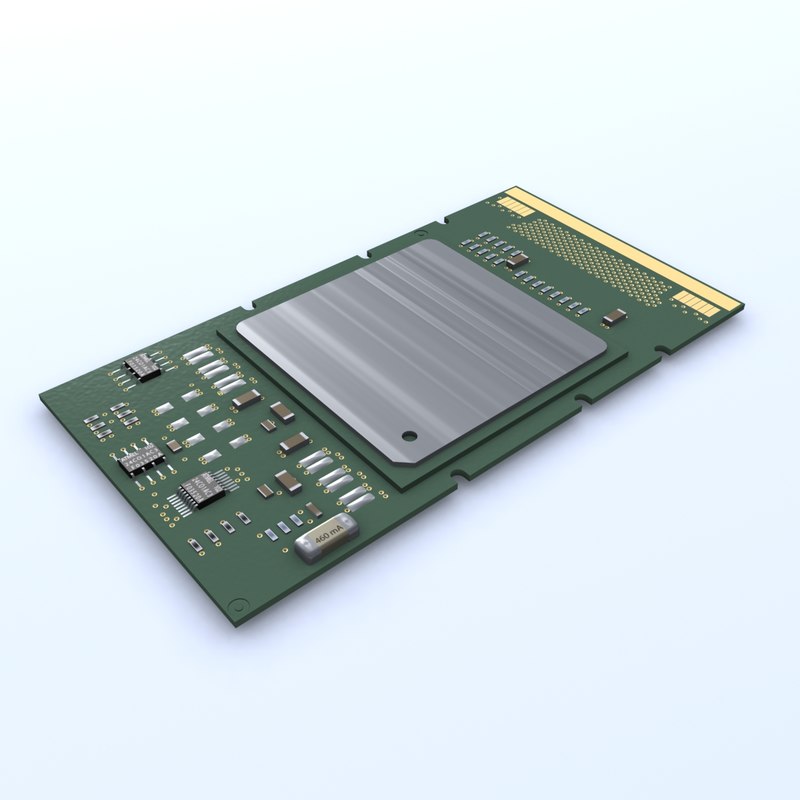
The Itanium 2 processors, while boasting impressive architectural features, faced a significant hurdle in widespread adoption: software support. Developing applications and operating systems for the novel IA-64 architecture presented unique challenges that slowed down the transition compared to more established platforms. This lack of readily available software created a feedback loop, hindering broader market penetration.The transition to a new instruction set architecture, like IA-64, is rarely smooth.
Significant effort is required to develop compilers, libraries, and operating systems that effectively utilize the new architecture’s potential. Developers often need to adapt existing software or create entirely new versions compatible with the new hardware. This was particularly true for the Itanium 2, which required substantial investment in software development resources.
Software Availability for IA-64
The availability of software for the IA-64 architecture was, unfortunately, limited compared to prevalent platforms like x86. This scarcity meant fewer applications and tools were readily available for Itanium 2, creating a challenge for developers and end-users. Itanium 2’s software ecosystem was a key area that needed substantial development to achieve widespread adoption.
Challenges in Developing Software for IA-64
Developing software for the IA-64 architecture presented several significant challenges. The complex instruction set required specialized compilers and tools, which were often costly and time-consuming to develop. Moreover, the need to rewrite or adapt existing codebases for the new architecture meant that many developers were hesitant to invest in the necessary resources. Another key aspect was the lack of readily available libraries and frameworks specifically tailored for IA-64.
This hindered the creation of complex applications and reduced the appeal of the platform.
Comparison with Other Platforms
Compared to other platforms, the Itanium 2 ecosystem suffered from a lack of mature software support. On platforms like x86, a vast library of applications and tools were available, making development and deployment significantly easier. This difference in software availability was a major factor contributing to the slower adoption rate of the Itanium 2. The rich ecosystem surrounding x86 platforms, including numerous operating systems and application support, contrasted starkly with the limited options available for Itanium 2.
Impact of Limited Software Support on Adoption
The limited software support significantly impacted the adoption rate of Itanium 2 processors. Companies were hesitant to invest in new hardware without a robust software ecosystem. The lack of readily available applications, tools, and libraries meant that the Itanium 2 platform was less appealing than its competitors. The absence of substantial software support discouraged businesses from transitioning, further hindering the platform’s growth.
Compatible Operating Systems and Applications (Illustrative Table)
| Operating System | Applications (Illustrative Examples) |
|---|---|
| HP-UX | Enterprise applications, databases |
| SUSE Linux Enterprise Server | Server applications, middleware |
| Windows Server 2003 | Server-side applications, specific business software |
| Other Unix variants | Specialized server applications, scientific computations |
Note: This table provides illustrative examples. The specific applications and their compatibility with Itanium 2 can vary.
Success and Failure of Itanium 2

The Itanium 2 processor, while groundbreaking in its architecture, ultimately failed to capture a significant market share beyond specific niche applications. This failure wasn’t due to a single factor but rather a confluence of technical, market, and strategic issues. Understanding its trajectory reveals valuable lessons for future processor design and highlights the complexities of competing in a dynamic technological landscape.The Itanium 2, with its innovative EPIC (Explicitly Parallel Instruction Computing) architecture, aimed to tackle complex computational tasks by executing instructions in parallel.
This approach, while theoretically powerful, faced challenges in achieving widespread adoption.
Key Reasons for Itanium 2’s Success in Niches
The Itanium 2 architecture, despite its eventual market struggles, found specific niches where its capabilities resonated. These niches included high-performance computing (HPC) environments, where its parallel processing strengths could be leveraged for complex simulations and scientific modeling. Its robust instruction set, although initially complex for software developers to master, allowed for highly optimized applications tailored to specific computational tasks.
Furthermore, the strong support of certain government agencies and research institutions contributed to a demand for the processor in research facilities and high-end scientific computing.
Reasons for Itanium 2’s Decline in Popularity
The Itanium 2’s eventual decline stemmed from several interconnected factors. The complex instruction set architecture (ISA) presented a steep learning curve for software developers, hindering the creation of compatible applications. This hurdle slowed the development of applications and software libraries, leading to a limited software ecosystem compared to its x86 counterparts. The performance gap compared to x86 processors in common applications further hindered its adoption, as existing software and applications could not easily be ported.
Intel’s recent update to Itanium 2 processors is interesting, especially considering the recent alliance between Sun and Suse on Java Linux. Sun and Suse’s partnership on Java-based Linux systems might offer some clues to how Intel’s updates will be received. This new Itanium 2 processor update could be a game-changer, offering better performance and compatibility, potentially leading to increased adoption and usage.
Finally, the initial high cost of Itanium 2-based systems made them inaccessible to a wider range of consumers and businesses.
Market Forces Influencing Itanium 2’s Trajectory
The market dynamics of the late 1990s and early 2000s played a critical role in shaping the Itanium 2’s fate. The dominance of the x86 architecture, fueled by its extensive software ecosystem and widespread adoption in personal computers, created a formidable barrier to entry. The existing ecosystem of x86 software was massive and deeply ingrained in the market, making it difficult for Itanium 2 to gain traction.
The rapid pace of advancements in x86 technology, with continuous performance improvements and decreasing costs, further marginalized the Itanium 2’s position.
Lessons Learned from the Itanium 2 Project
The Itanium 2 project offered valuable lessons for future processor design. The importance of a robust and supportive software ecosystem cannot be overstated. The need for a clear, well-defined market niche for a new architecture is also crucial. A complex architecture, while theoretically powerful, can become a barrier to adoption if the development of compatible software is not proactively addressed.
This highlights the crucial relationship between hardware and software in a processor’s success.
Influence of Competing Architectures on Itanium 2 Market Share
The x86 architecture, with its widespread adoption in personal computers, servers, and embedded systems, effectively dominated the market. The robust and mature software ecosystem supporting x86 significantly contributed to its enduring popularity. The continual innovation and performance improvements in x86 processors further solidified its position. Competing architectures like ARM, while strong in mobile devices, did not pose a significant challenge to x86’s dominance in the server and desktop markets.
These factors combined to limit the Itanium 2’s ability to gain traction against its established rivals.
Legacy and Future Implications: Intel Updates Itanium 2 Processors
The Itanium 2 processor, while ultimately unsuccessful in the mainstream market, left a unique mark on the history of computing. Its innovative architecture, focused on a highly parallel processing approach, presented a significant departure from the dominant x86 architecture. Understanding its legacy allows us to assess potential future design directions and glean valuable lessons for modern processor development.The Itanium 2’s ambitious attempt to move beyond the limitations of traditional architectures, through its complex instruction set and focus on performance in specific workloads, had profound implications for future chip design.
This foray into a different paradigm, although not universally embraced, provided valuable insights into the complexities of high-performance computing and the challenges of scaling processor architectures beyond a certain point.
Long-Term Impact of the Itanium 2 Architecture
The Itanium 2’s primary impact was not in its widespread adoption but in its exploration of alternative processor architectures. It highlighted the significant challenges in shifting from established paradigms and the need for strong ecosystem support, which was largely lacking. This architecture, while not succeeding commercially, spurred research into specialized hardware and software solutions for specific computational needs.
The focus on compiler optimization and the intricate interplay between hardware and software became more apparent as a result of the Itanium 2 project.
Potential Implications for Future Processor Design
The Itanium 2 architecture, despite its failure to achieve mainstream adoption, explored a crucial area: the optimization of specific tasks and workloads. Its innovative approach to parallelism and instruction set design could potentially be beneficial in niches requiring extreme processing power. Modern architectures often integrate specialized units for specific tasks, drawing inspiration from the Itanium 2’s approach. For example, the graphics processing units (GPUs) used in many modern computers leverage highly parallel processing units, echoing the Itanium 2’s fundamental concepts.
Enduring Lessons from Itanium 2 for Modern Processor Development
The Itanium 2’s story underscores the importance of a robust software ecosystem. Its failure highlights the critical need for a comprehensive suite of compatible software, operating systems, and development tools to support a new architecture. A strong software foundation is essential to attract developers and build a sustainable market for a novel architecture. The experience with Itanium 2 also emphasizes the need for careful consideration of target applications.
The architecture was designed for high-performance computing, but its performance on general-purpose tasks was not as impressive. This underscores the need for careful consideration of the specific computational demands of the targeted market segment.
Potential Future Developments Inspired by Itanium 2’s Strengths
The Itanium 2’s exploration of specialized instruction sets and parallel processing can inspire future designs. This approach could be leveraged in specific niches like high-performance computing, scientific modeling, and specialized data analytics.
| Inspired Feature | Potential Application | Rationale |
|---|---|---|
| Specialized Instruction Sets | High-performance scientific computing | Targeted instructions can boost performance in specific domains. |
| Advanced Parallel Processing | AI/Machine Learning | Parallelism can significantly accelerate complex AI tasks. |
| Compiler Optimization Focus | Embedded systems with stringent performance requirements | Efficient compilation translates to optimized code for specific devices. |
Last Point
Intel’s updates to the Itanium 2 processors, while not a widespread consumer update, offer a valuable case study in processor design and market dynamics. The journey of Itanium 2 reveals the challenges of creating a new architecture, the importance of software support, and the ever-shifting tides of the technology market. This exploration leaves us pondering the enduring lessons from this unique processor line.

